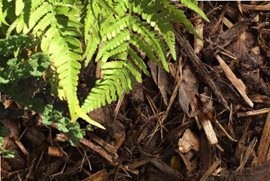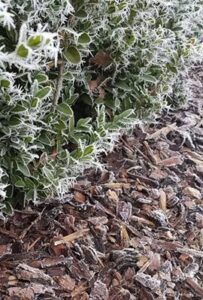 What is mulch? What benefit does mulching have? What kind of materials or products are best for garden mulch? These are questions we are often asked about mulching. The last question is a lot simpler to answer because one of the most popular and commonly used garden mulches is bark chippings. For gardeners and landscapers with backache, bark chippings really are a superb investment!
What is mulch? What benefit does mulching have? What kind of materials or products are best for garden mulch? These are questions we are often asked about mulching. The last question is a lot simpler to answer because one of the most popular and commonly used garden mulches is bark chippings. For gardeners and landscapers with backache, bark chippings really are a superb investment!
Bark chippings are used both by gardeners requiring a mulching material as well as by landscapers wishing to add decorative uniformity to large areas of beds, borders and other soil filled areas. Bark chippings can perform a multitude of jobs, but it is as mulch that bark chippings really come into their own.
Multi-talented bark chippings
 Bark chippings are capable of performing all of the functions that garden mulch requires, one of which is perhaps the most important when it comes to saving the gardener a great deal of time – bark chippings inhibit weed growth. A layer of bark chippings across the soil around plants and shrubs will stop sunlight reaching the seeds and small shoots that form when weeds are beginning to develop as the weather turns warmer during spring.
Bark chippings are capable of performing all of the functions that garden mulch requires, one of which is perhaps the most important when it comes to saving the gardener a great deal of time – bark chippings inhibit weed growth. A layer of bark chippings across the soil around plants and shrubs will stop sunlight reaching the seeds and small shoots that form when weeds are beginning to develop as the weather turns warmer during spring.
Secondly, bark chippings further help the gardener by saving more time when it comes to watering beds and borders during hot weather. This is because when bark chippings are applied, they form a layer above the soil which allows water to penetrate to the earth below, but also reduces evaporation from the soil’s surface therefore retaining more moisture. The bark chippings also provide a blanket of insulation over the soil during very cold weather, helping to protect the roots of plants from damaging frosts and ice.
Finally, gardeners using bark chippings as a garden mulch will not only get some decorative benefit from the bark itself, but the soil will also benefit from the additional organic matter as the natural products breaks down and composts, encouraging living organisms to inhabit the soil such as worms which in turn provide benefits to soil quality.